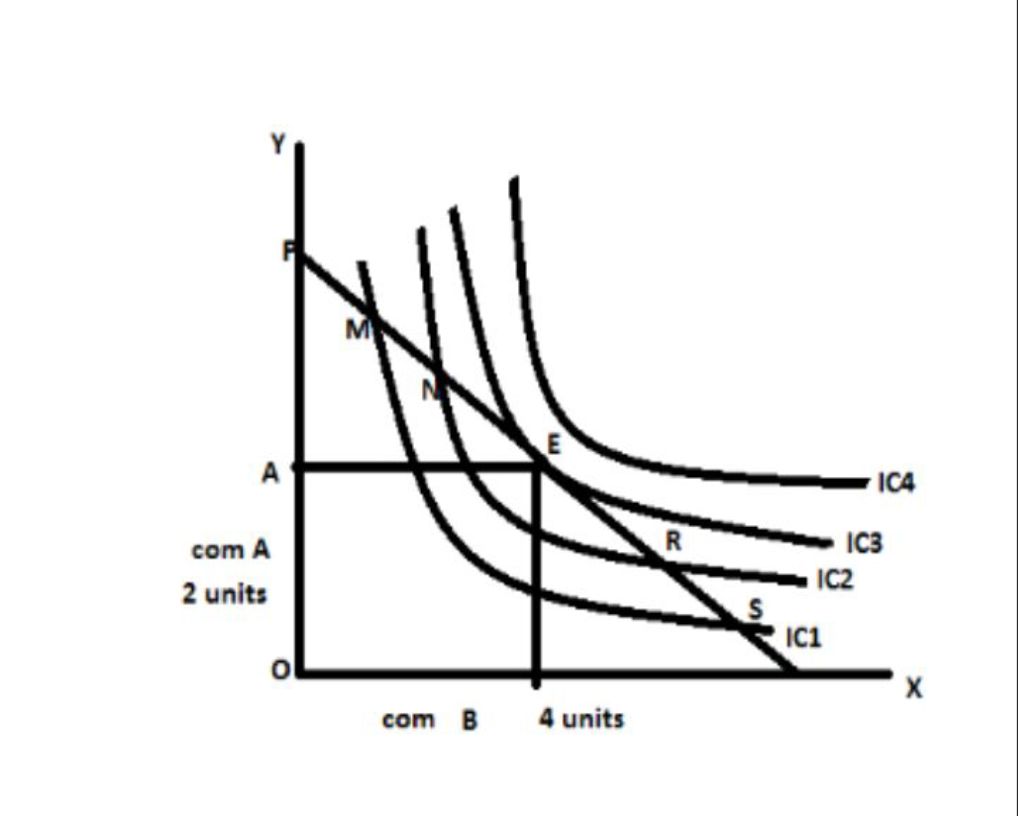Introduction:
The basic objective of the consumer is to drive highest level of satisfaction of a given amount of money in order to achieve this objective; he will spend his limited income in combination of two commodities which will highest told level of satisfaction. The consumer reaches the position of equilibrium when he enjoys the highest level of satisfaction by consuming the most ideal or best possible combination of two goods for a given amount of income. The position of equilibrium will be in the indicate by the point at which the budget line is tangential to the indifference curve. The explanation of the consumers equilibrium analysis is
Assumptions:
- The consumer is rational in his behavior he seeks to maximize his level of satisfaction from the purchase of two goods.
- The consumer has a fixed amount of money income to spend on the two goods A and B.
- Price of two goods is given and constant.
- the consumer will work out possible combination of two goods on the basis scale of preference which would remain unchanged throughout our analysis
- there is no change in taste and habit of the consumer
- Different units of the commodities A and B are homogeneous and divisible and the consumers can conveniently workout different combination of these two goods.
Explanation:
In order to explain the equilibrium of the consumer, we make us of two tools of ICA that is budget line and indifference map.
Illustration
- Income of the consumer is rupees 4,
- price of the commodity A per unit is 25 Paisa and
- Price of the commodity B per unit is 50 paisa.
Assuming that the given income of rupees 4 is spend on commodity A. the consumer get 16 unit of A. similarly assuming that the same income of rupees 4 is spend on commodity B. the consumer can get 8 units of B. when the consumers spends his entire income of rupees 4 on commodity A he get 16 units of A, similarly when he is spend his entire income on B he gets 8 units of B.
The budget line indicates the limited or given income of the consumer with the help of which we can buy a particular combination of two goods A and B. the indifference map represent as subjective scale of preference of the consumer based on his taste, habits and likes and dislikes. it is clear that both budget line and difference map are quite independent of one another in order to explain the equilibrium position of the consumer we have to super imposed the budget line upon the consumer indifference map.

In the diagram, the indifference curve number 3 is meeting the PQ at E. hence PQ budget line is tangent to indifference curve 3 at E. the point of equilibrium. At the equilibrium position the consumer will be purchasing 8 units of A and 4 units of B. by spending rupees 2 on each. He cannot purchase the above combination of two good at the point MNRS, because this points lies on the indifference curve of the lower order. His income does not permit him to go for indifference curve4. Hence the point E indicates equilibrium position of the consumer.
also read: explain the determinants of supply.